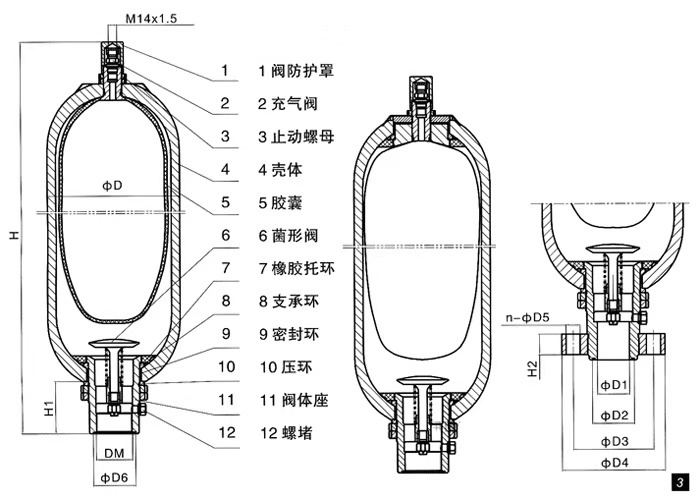-
- Energy storage hydraulic control system with reliable energy monitoring
- Energy storage high-flow hydraulic forming system
- High-precision digital servo synchronous actuation system
- Energy storage high-flow electro-hydraulic servo test system
- Energy storage, large flow compensation and balance hydraulic control system
- High-frequency fatigue testing system
-
-
- Product
-
Solution
-
Energy storage hydraulic control system with reliable energy monitoring
- Energy storage high-flow power source start-up system
- Energy-saving electro-hydraulic control system
- Hydro-controlled system of electric furnace energy storage device power source
- Emergency control high-pressure accumulator power source for valves
- Governor energy storage power source electro-hydraulic control system
-
Energy storage high-flow hydraulic forming system
-
High-precision digital servo synchronous actuation system
-
Energy storage high-flow electro-hydraulic servo test system
-
Energy storage, large flow compensation and balance hydraulic control system
- High-frequency fatigue testing system
-
Energy storage hydraulic control system with reliable energy monitoring
- Service
- Calculation
-
-
-
Energy storage hydraulic control system with reliable energy monitoring
-
Energy storage high-flow electro-hydraulic servo test system
-
Energy storage, large flow compensation and balance hydraulic control system
-
In a hydraulic circuit with multiple accumulators in parallel, if one bladder ruptures, will the volume of the other accumulators change?
Published Time:
2024-11-15 17:21
Category:
Case study



During normal operation, if the system continuously supplies oil and the system oil pressure remains unchanged, if one accumulator bladder ruptures, the volume of the other parallel accumulators remains unchanged. This is because the volume of the accumulator bladder (5 in the figure above) is only related to the gas pre-charge pressure and the system operating oil pressure (pressure in the pipe indicated by DM). When the system is not working, the oil pressure is approximately 0. Under the action of the gas pre-charge pressure, the bladder (5) expands fully, and the mushroom valve (6) is pressed against the seat. When the system is working and the oil pressure is greater than the gas pre-charge pressure, the mushroom valve (6) opens, and oil enters the accumulator, compressing the bladder. Due to the compression of the gas, the pressure inside the bladder rises until it balances with the oil pressure. Therefore, when an accumulator bladder ruptures, oil enters the bladder and mixes with the gas. The oil comes from the pump supply. As long as the pump supplies oil promptly, the oil pressure will not decrease, so the volume of other accumulator bladders will not change; if the pump only maintains a minimum oil supply flow rate, then the oil pressure will decrease, and the volume of other accumulator bladders will change simultaneously (increase), but the system can still work to a certain extent. As for the working stroke mentioned by the questioner, it will not change due to bladder rupture. As long as the control valve or pump supplies the working device with an unchanged oil volume and flow rate, the working stroke will not be affected.
However, the dangers of bladder rupture cannot be ignored. Let's analyze this:
When an accumulator bladder ruptures, oil enters the bladder and mixes with the gas. In a better-case scenario, the gas aggregates inside the accumulator. In a worse-case scenario, the gas is carried out by the oil: If it enters the valve, there will be a whistling sound; if it enters the cylinder or motor, due to the rapid decrease in the elastic modulus after the oil and gas mix, the dynamic performance of the working mechanism will deteriorate; if it enters the oil tank, if the oil tank is closed, it may cause the oil tank to be instantly filled with gas, producing unusual noises or explosions; if it enters the pump or motor, it may also crush the bubbles into a foamy state, causing the oil quality to deteriorate rapidly, requiring an oil change.
Therefore, for the questioner's frequently occurring bladder accumulator rupture situation, the cause must be investigated. First, check whether the selection does not consider the system's operating conditions, for example, whether there are frequent conditions of large charging and discharging of the accumulator, whether there are frequent conditions of rapid release of the accumulator, whether the instantaneous pressure is too high, etc. Bladder rupture is bladder failure, generally reaching the limit condition of bladder fatigue failure. If the operating conditions meet the above conditions, consider replacing it with a piston-type accumulator to avoid this situation.
Accumulators are interesting components in hydraulic systems, similar to capacitors in circuits and springs in mechanics. They are important energy storage components and can be used in hybrid power, shock absorbers, stable system pressure (sometimes stable flow), and instantaneous energy release to simulate impacts, etc., with very clever applications.
Recommended News
Analysis of the reasons for serious pressure drop and short service life of bladder accumulators? The structure of a bladder accumulator is simple, mainly consisting of the oil around the bladder and the gas part with a gas seal. During operation, the oil should be connected to the oil circuit. Once the pressure rises, the oil will enter the accumulator, and the gas will be compressed until the pressure in the system pipeline stops rising.
How to reduce failures when the accumulator malfunctions?
If the accumulator malfunctions, it will directly affect its performance, and may even cause abnormal pressure and system failure. More attention should be paid to it during daily use, and measures should be taken to reduce the risk. So, how to reduce the failure of the accumulator? The following is an introduction to this problem.
Accumulators are interesting components in hydraulic systems, similar to capacitors in circuits and springs in mechanics. They are important energy storage components and can be used in hybrid power systems, shock absorbers, pressure stabilization systems (sometimes flow stabilization), and the simulation of impact through instantaneous energy release, among other clever applications.
1. Bellows typically have a shorter lifespan (compared to piston-type) and there is significant quality variation between brands; 2. Many factors contribute to shortened bellows lifespan and rupture, including inherent quality variations in the bellows themselves, improper operation during bellows assembly (such as failure to lubricate with fluid beforehand), improper pre-inflation procedures (such as failure to inflate slowly), pre-inflation pressure calculation errors, oil port flow rates approaching or exceeding 7 m/s, single reciprocation times approaching or less than 10 seconds when used for energy storage, bellows colliding with the check valve during operation, large temperature fluctuations (including large seasonal temperature differences), prolonged lateral vibration and shaking, fluid corrosion, inertial impact from small solid impurities in the medium, etc.;
Sevilla Company and the state-owned enterprise General Tianjuan have reached a cooperation intention for the development of new product modules for high-flow special-purpose forming, working together to develop a high-speed, high-flow power system suitable for metal and composite material forming.
Seville Beijing Company successfully completed the ASME system recertification work
Seville Beijing Company completed the recertification and upgrade work for the 2023 version of ASME VIII. Div 1, continuing to provide high-quality products and services to the ASME standard coverage area.
Products of Different Specifications
Products
Application Fields
Application
Partners
Partner
Exporting Countries and Regions
Exported Countries
-
-
-
Energy storage hydraulic control system with reliable energy monitoring
-
Energy storage high-flow electro-hydraulic servo test system
-
Energy storage, large flow compensation and balance hydraulic control system
-
Schwerll Fluid Control (Beijing) Co., Ltd.
Address: Building 39B, Floor 1, No. 16, Huanke Zhong Road, Tongzhou Park, Zhongguancun Science and Technology Park, Tongzhou District, Beijing
Welcome to access our company through the following methods
Copyright © 2024 Schwell Energy Storage Technology (Beijing) Co., Ltd.
COOKIES
Our website uses cookies and similar technologies to personalize the advertising shown to you and to help you get the best experience on our website. For more information, see our Privacy & Cookie Policy
COOKIES
Our website uses cookies and similar technologies to personalize the advertising shown to you and to help you get the best experience on our website. For more information, see our Privacy & Cookie Policy
These cookies are necessary for basic functions such as payment. Standard cookies cannot be turned off and do not store any of your information.
These cookies collect information, such as how many people are using our site or which pages are popular, to help us improve the customer experience. Turning these cookies off will mean we can't collect information to improve your experience.
These cookies enable the website to provide enhanced functionality and personalization. They may be set by us or by third-party providers whose services we have added to our pages. If you do not allow these cookies, some or all of these services may not function properly.
These cookies help us understand what you are interested in so that we can show you relevant advertising on other websites. Turning these cookies off will mean we are unable to show you any personalized advertising.





